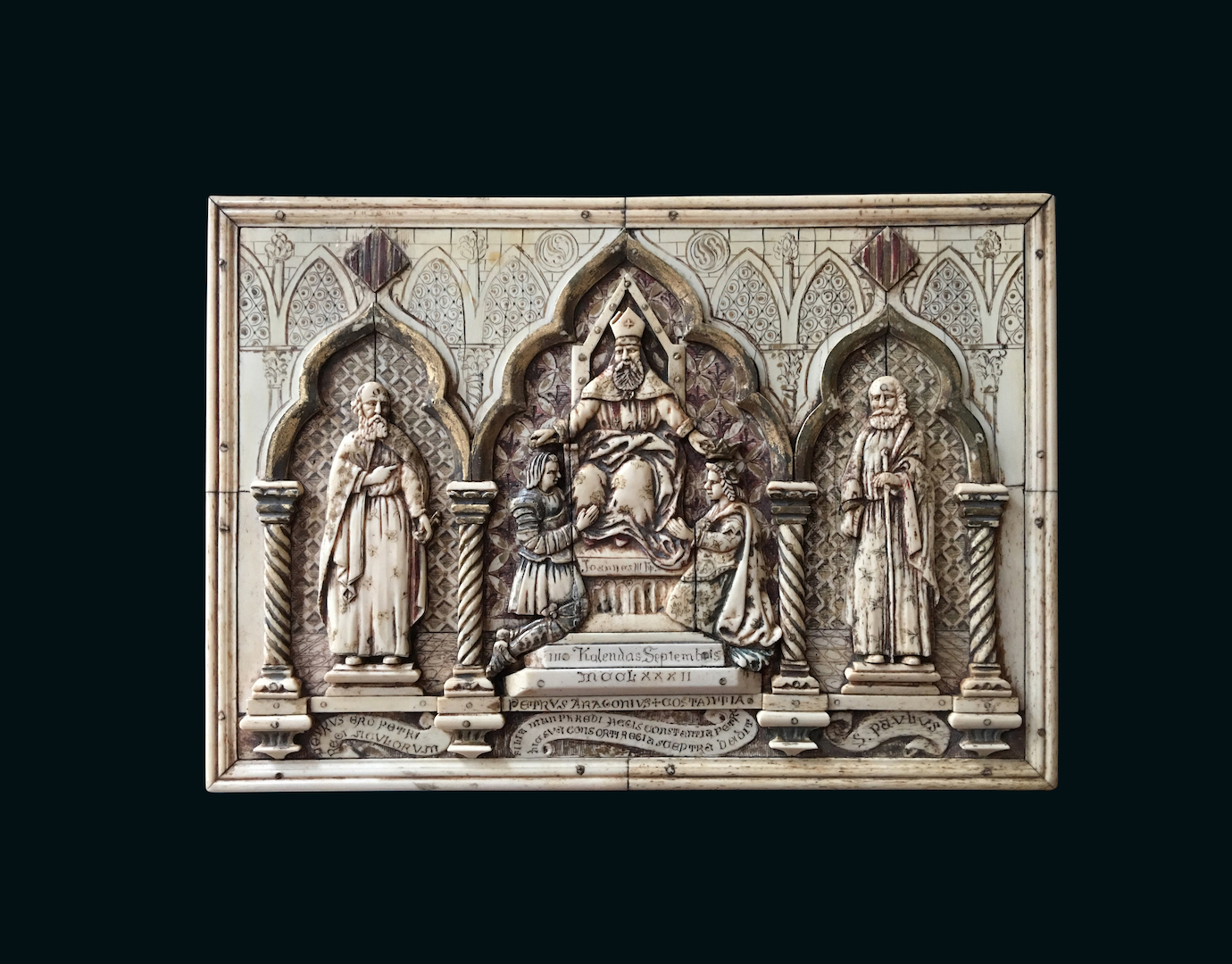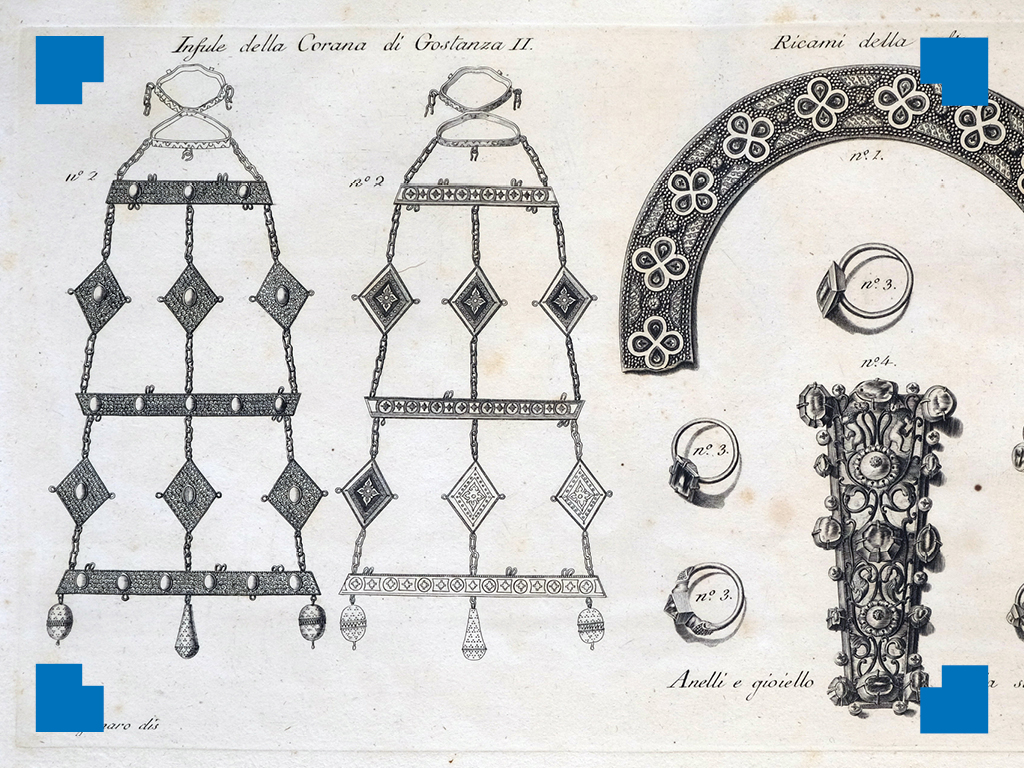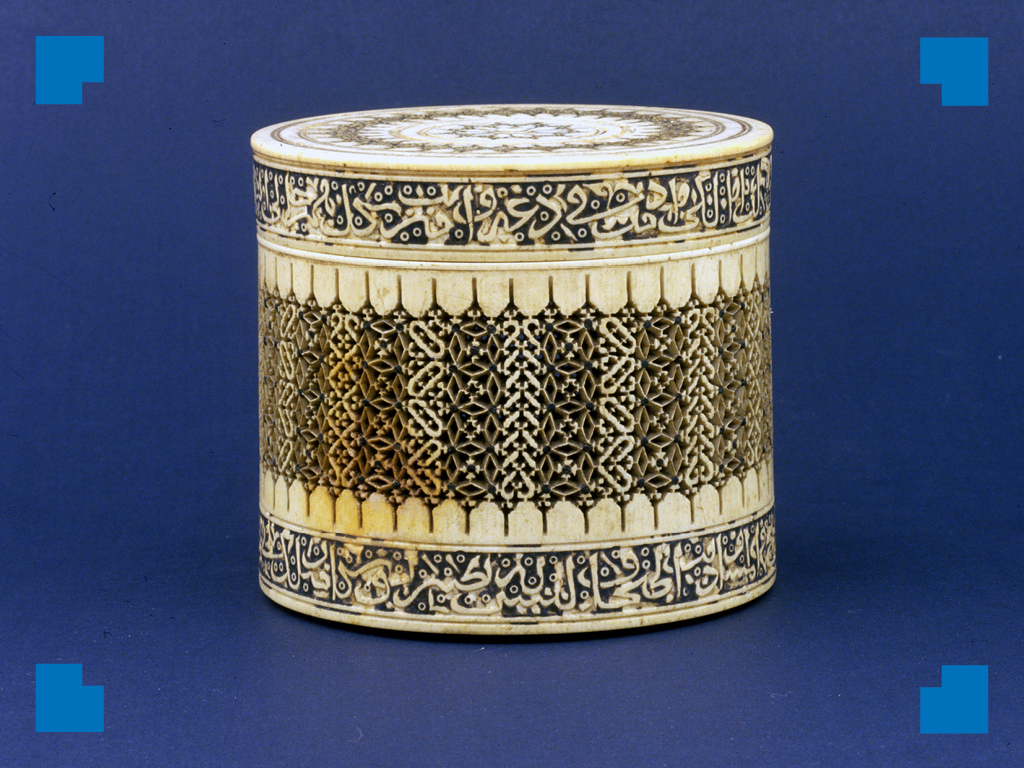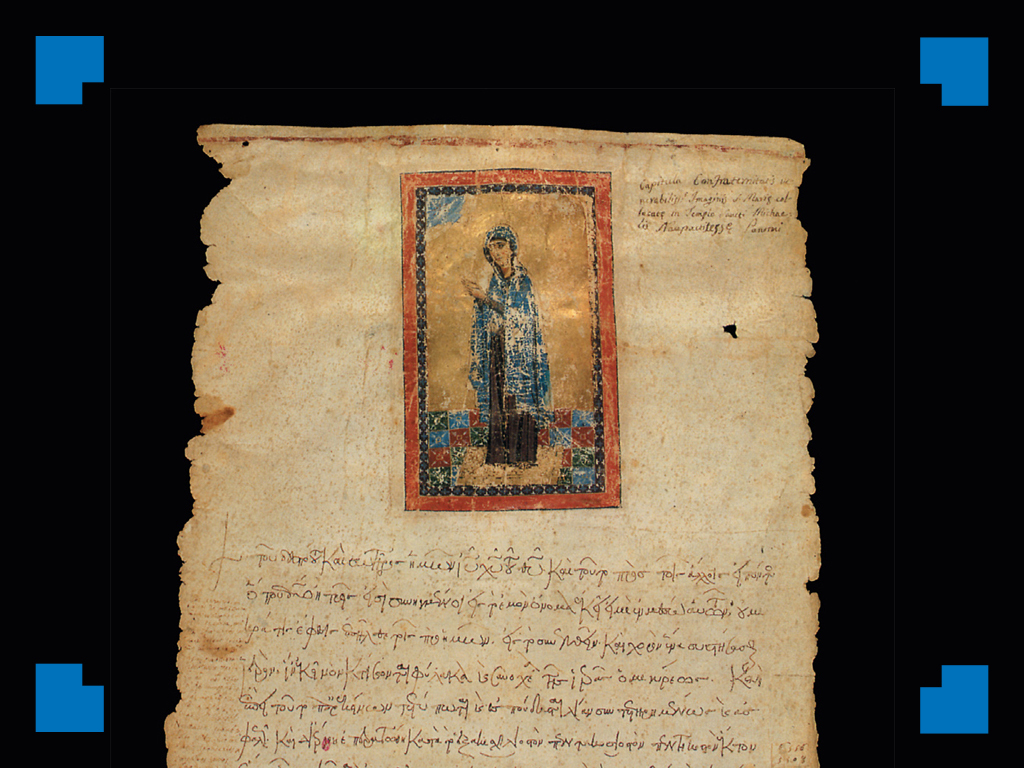
23. Casket for Joshua and Effie Whitaker
Andrea Onufrio and Rosario Bagnasco, ca.1889-1890
Casket for Joshua and Effie Whitaker
with Coronation of Peter III of Aragon together with Constance of Swabia
BISHOP JOHN THE THIRD, AUGUST 30, 1282 / PETER OF
ARAGON + CONSTANCE/ PETER I SHALL BE FOR PETER KING
OF SICILY / CONSTANCE DAUGHTER OF KING MANFRED HERE
GAVE THE ROYAL SCEPTER TO HER HUSBAND PETER /
SAINT PAUL.
polychromed and gilded engraved bone
plaques on wooden structure (13x33x25 cm)
Rome, private collection
(owner’s photo)
This precious bone casket is influenced by the medieval ones, mainly produced by the Embriachi, but also by craftsmen from Southern Italy and present, for example, in the collection of the Palatine Chapel of Palermo (cat. 28).
It was designed by cultured furniture maker from Palermo Andrea Onufrio (1828-1908), specialized in the recovery of ancient craft traditions, and it was by carver Rosario Bagnasco, in opposition to the rising culture of serial production. Some of Onufrio’s works were awarded the gold medal at the Universal Exposition of Paris in 1900.
It was commissioned by a woman, Euphrosine Manuel, called Effie, originally from Gibraltar and wife of Joshua Whitaker, heir to a very wealthy family of English origin settled in Palermo in the early decades of the nineteenth century and with several investments in Boston and New York.
The artist wanted to create a production made of unique pieces that recalled a purely Sicilian style. But, besides the neo-gothic style, he represented in his works episodes of the glorious history of the Kingdom of Sicily.
On the cover, he represented the coronation of Peter III of Aragon as King of Sicily with Constance of Swabia, following the Vespers revolt in 1282 (Focus 24). The Latin inscription in the cartouche at the bottom clearly states the role of Constance of Swabia: she is the heir to the kingdom, she grants the scepter to her husband.
Her great-grandmother, Constance of Hauteville, had the same destiny, as she brought the Kingdom of Sicily as a dowry to Henry VI of Swabia.
Focus – Kings, Queens, Emperors and Empresses on the Whitaker casket
The casket portrays part of the royal genealogy of the Kingdom of Sicily up to Constance of Swabia, holder of the crown of the kingdom that she will grant to her husband Peter III of Aragon. From her the dynasty of Aragon-Sicily will be born.
The carved figures can be identified through the inscriptions and represent the Norman-Swabian sovereigns of the kingdom with some their wives.
On the back, there are Henry VI of Swabia (1165-1197) with Constance of Hauteville (1154-1198), together with King William I called “the Bad” (brother of Constance, 1120-1166), buried in the Cathedral of Monreale (cat. 15), and the latter’s son, William II (1153-1189), instead called “the Good”, founder of the monastic complex of Monreale (cat. 16, 17).
On the left side, with the imperial eagle of the Hohenstaufens, we see Manfred (son of Frederick II, 1232-1266) and Conradin (son of Conrad IV, 1252-1268).
On the right side, again with the eagle of the Hohenstaufens family, there is Frederick II (1194-1250) with his son and heir Conrad IV (1228-1254).
The front perhaps portrays Peter III of Aragon and Constance of Swabia to whose left, under the so-called coat of arms Hauteville, are Roger “the Great Count” of Sicily (1031-1101), who conquered the island back from the Muslims, and his son Roger II (1095-1154), first King of Sicily and father of Constance of Hauteville.
On the lid, you see the coronation of Peter III of Aragon as King of Sicily with Constance of Swabia, daughter of Manfred, following the Vespers revolt in 1282 (Focus 24). On their sides are St. Peter (left) – who points to the royal couple and in the cartouche declares his support to the new king, for whom he will be as a stone (from his name Peter, Petrus in Latin, meaning stone) – and St. Paul (right).
The Latin inscription in the cartouche at the bottom clearly states the role of Constance of Swabia: she is the heir to the kingdom, she grants the scepter to her husband (cat. 23).


